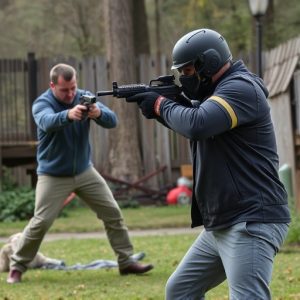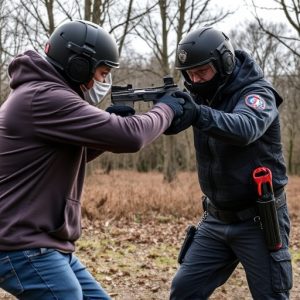Unraveling Stun Gun Frequencies: What Buyers Need to Know
When purchasing a stun gun, consider electrical pulse frequency as a key factor. Higher frequencies…….
When purchasing a stun gun, consider electrical pulse frequency as a key factor. Higher frequencies enhance power and muscle disruption but shorten battery life, while lower frequencies are safer for close range. Balance is crucial, with adjustable settings offering tailored intensity. Focus on consistent pulse delivery, robust construction, safety features, and user-friendly design for optimal effectiveness and risk minimization. Check specific frequency ranges (100-400 kHz) and certifications for informed decisions, aligning stun gun choice with intended use and legal requirements.
“Unraveling the science behind stun guns starts with understanding electrical pulse frequency—the heartbeat of their effectiveness. This article guides you through the intricate world of stun gun technology, offering insights on crucial factors to consider when evaluating pulse frequency.
From debunking common misconceptions to exploring advanced innovations, we delve into how frequency impacts performance and safety. Moreover, we equip buyers with expert advice on what to look for when purchasing a stun gun, ensuring informed decisions in today’s digital era.”
- Understanding Electrical Pulse Frequency: The Basis of Stun Gun Effectiveness
- Key Factors to Consider When Evaluating Pulse Frequency
- Impact of Frequency on Stun Gun Performance and Safety
- Common Misconceptions About Stun Gun Pulse Frequencies Debunked
- Advanced Technology: High-Tech Stun Guns and Their Pulse Innovations
- What Users Should Demande When Buying Stun Guns Based on Frequency
Understanding Electrical Pulse Frequency: The Basis of Stun Gun Effectiveness
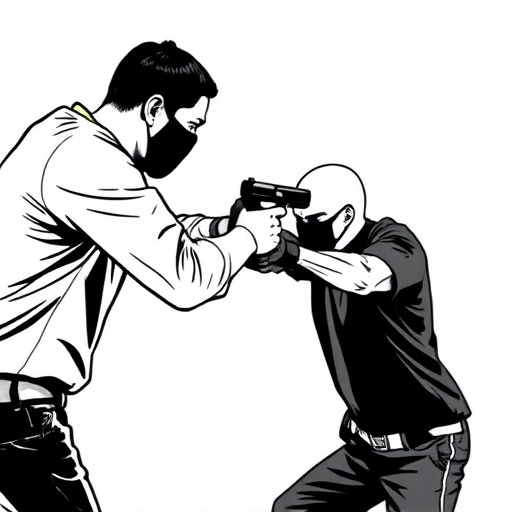
Understanding Electrical Pulse Frequency is key to comprehending the effectiveness of stun guns, and it’s a crucial factor when considering what to look for when buying them. Stun guns emit short bursts of high-voltage electrical energy through an electrode assembly that makes contact with the target. The intensity and duration of this electrical pulse directly impact the stun’s effectiveness. Frequency refers to how many pulses are delivered per second, measured in Hertz (Hz).
Higher frequency means more pulses per second, potentially increasing muscle disruption and immobilization. However, it also draws more power, affecting the device’s battery life. Therefore, manufacturers must balance efficiency, durability, and pulse intensity to create optimal stun gun performance. When shopping, buyers should look for devices offering a balanced frequency that ensures both longevity and effective shock delivery.
Key Factors to Consider When Evaluating Pulse Frequency

When evaluating the pulse frequency in stun guns, several key factors should guide your decision. First and foremost, consider the intended use; different scenarios demand varying frequencies. For close-range, personal protection, higher frequencies (up to 150 kHz) are often effective, as they can disrupt muscle control without causing serious harm. In contrast, for more distant or larger targets, lower frequencies (around 20-40 kHz) may be necessary to ensure a strong enough shock.
Additionally, power and energy delivery are crucial. Higher pulse frequencies generally mean higher energy output, which can result in a more intense stun effect. However, it’s essential to balance this with safety; excessive power could lead to collateral damage or increased risk of user injury. Therefore, when buying stun guns, look for models that offer adjustable frequency settings, allowing you to tailor the shock to your specific needs and preferences while maintaining control over its intensity.
Impact of Frequency on Stun Gun Performance and Safety
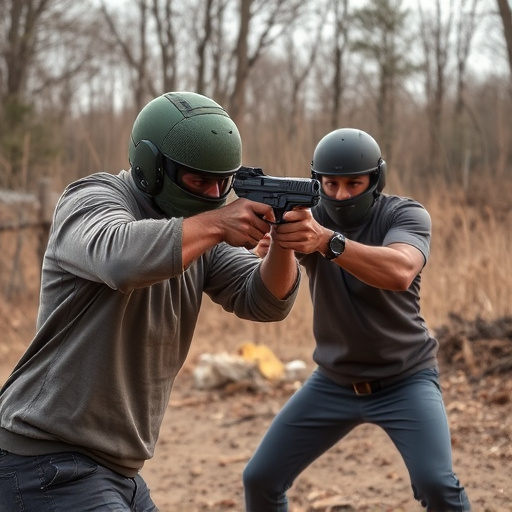
When considering what to look for when buying stun guns, understanding the impact of frequency on performance and safety is crucial. Electrical pulse frequency plays a significant role in determining the effectiveness of a stun gun. Higher frequencies can penetrate clothing better, ensuring the electrical pulse reaches the target with greater force. This results in faster muscle contractions, leading to immobilization. However, extremely high frequencies may cause excessive discomfort or even damage tissues if not properly regulated.
Balance is key. Stun guns with adjustable frequency settings offer a safer and more versatile option, allowing users to customize the intensity based on the situation. Lower frequencies are generally safer for close-range use, while higher ones prove more effective at longer ranges. Always opt for devices that maintain consistent pulse delivery, ensuring optimal performance and minimizing risks during use.
Common Misconceptions About Stun Gun Pulse Frequencies Debunked

Common Misconceptions About Stun Gun Pulse Frequencies Debunked
One prevalent myth is that higher pulse frequencies in stun guns automatically translate to more powerful stun effects. While frequency does play a role, it’s not the sole determinant of stun gun effectiveness. What truly matters is the balance between pulse intensity and energy delivery. A stun gun with a lower frequency but stronger pulses can be just as effective, if not more so, than one with a higher frequency.
Another misconception is that certain frequencies are inherently safer for users. The reality is, all stun guns deliver an electric shock designed to disrupt muscle control temporarily. The key lies in responsible use and understanding the device’s safety features, regardless of the frequency. When buying stun guns, focus on what to look for: consistent pulse output, robust construction, and safety mechanisms like automatic shut-off and low battery indicators. These factors contribute far more to a stun gun’s reliability and user safety than the frequency alone.
Advanced Technology: High-Tech Stun Guns and Their Pulse Innovations
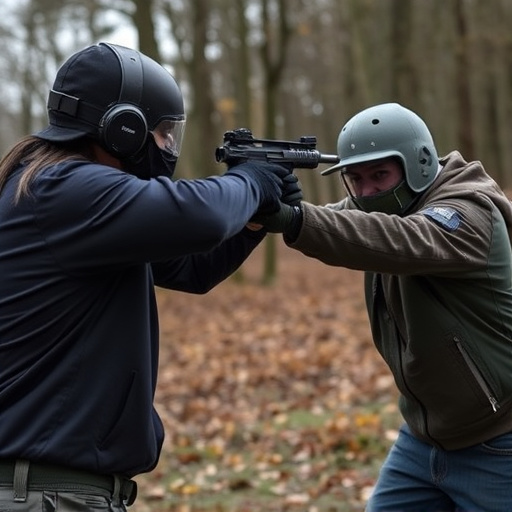
Advanced Technology has brought about significant improvements in Stun Guns, particularly in their pulse innovations. When buying stun guns, what to look for includes the frequency and duration of electrical pulses. Modern stun devices utilize high-tech circuits to deliver precise, powerful jolts, ensuring effectiveness and safety. These advancements allow users to choose between various pulse patterns, catering to different needs and preferences without compromising performance.
For instance, some models offer adjustable pulse settings, enabling users to tailor the intensity according to their requirements. This feature is crucial when considering the diverse situations that call for stun guns, from personal defense in dark alleys to law enforcement scenarios demanding precise control. Understanding these technical aspects can help buyers make informed decisions, ensuring they acquire a stun gun that aligns perfectly with their intended use.
What Users Should Demande When Buying Stun Guns Based on Frequency
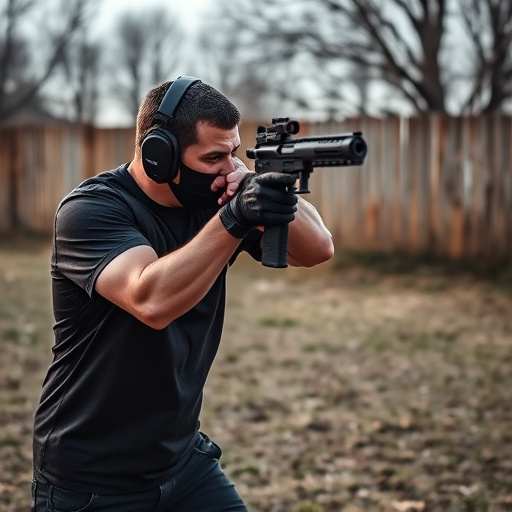
When purchasing a stun gun, understanding electrical pulse frequency is key to ensuring its effectiveness and safety. Users should look for specific frequency ranges that offer optimal performance. Typically, stun guns operate in the range of 100,000 to 400,000 Hz, but higher frequencies can provide more powerful shocks.
Focusing on stun guns with adjustable frequency settings allows buyers to tailor the device’s power to their needs and local legal requirements. This flexibility ensures users get the most out of their stun gun while adhering to safety guidelines. Additionally, checking for certifications and reviews related to stun gun quality and reliability is essential for making an informed purchase decision.
When considering what to look for when buying stun guns, understanding electrical pulse frequency is paramount. This article has explored the intricacies of pulse frequency, its impact on performance and safety, and debunked common misconceptions. Key factors include evaluating output, duration, and consistency. Advanced technologies now offer innovative pulse innovations, enhancing effectiveness while prioritizing user safety. At the core of a stun gun’s capability lies the electrical pulse it delivers, making informed choices based on these insights crucial for consumers seeking personal protection.
